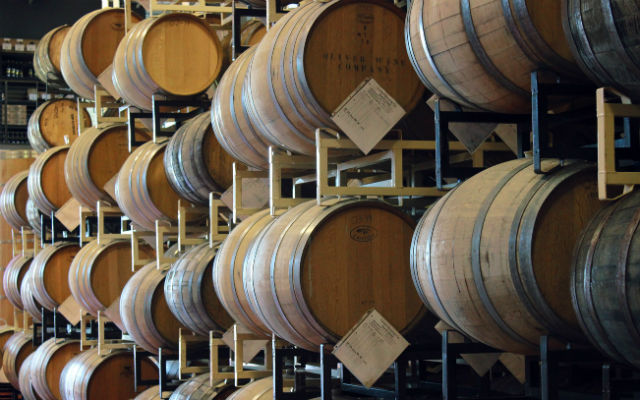
The original Firestone Walker brewery was a 12,000 square foot metal building housing a JV Northwest 50-barrel with a cellar, IDD manual keg filler, and an old Crown soda pop filling line.
”For the first 15 years, everything we purchased was secondhand, mostly via auction,” recalls co-founder Adam Firestone. “Limited finances meant a tight shopping budget. As we grew, there was no secondhand market, so we started ordering new tanks. That also meant adding new vessels to the original brewhouse so it could turn faster.
“Squeezing over 200,000 bbls out of the original brewhouse was possible via 12-14 turns per day and brewing 6.5 days per week. Maximizing our capacity became a core business principle and helped delay a huge capital outlay. Ultimately, we ran out of brewing capacity and added the 300-bbl Huppmann brewhouse but it was a modest addition given our run rate.”
Since capital was always tight, Firestone Walker needed to keep brewing to ensure the California brewery had the cash flow to fund new equipment.
“We never managed to build much excess capacity, so each addition was sorely needed,” Firestone told Brewer. “This meant better capital utilization but made production planning far harder; there was no buffer. Greenfield builds are amazing in concept, but brutal on the bottom line.”
Firestone Walker’s original brewhouse is still operational for small-batch beers but completely surrounded by new additions.
”Luckily, we had space on all four sides to allow the expansion,” Firestone said., nothing that plans changed constantly. “We self-taught the engineering needed to develop our own layout and plans.
“Hiring professionals might have produced a more orderly result, but economics forced it in-house.”
Hindsight is always 20-20, Firestone pointed out. While they were mostly lucky with used equipment, there were some failures.
One time, two matching used palletizers came at a total bargain. Unfortunately, Firestone said they ended up spending more re-working the mechanics and electronics that they might have spent starting new.
”We should have invested more time in pre-purchase inspections,” he admitted.
Firestone shared some tips for breweries looking to expand as well:
- There is always a huge temptation to purchase more capacity than is really needed. While it appears more efficient, if it depends on straight line sales growth, that capital outlay can sink the ship if the market cools down.
- Brewing operations are hard on equipment and caustic cleaners are corrosive. Spending well on a new tank but going cheap on the piping and wiring will cause headaches in time. Bare concrete floors will quickly pit and crumble against streams of hot wort and caustic. Epoxy or tiled flooring is expensive but necessary.
- You have to ensure the layout allows access. A pump with little or no access will be forgotten, and without maintenance, it will be a QC liability. If all your brewery mechanics are the size of NFL linemen, then you need still more space.
- The shorter the run, the less the problems. We managed to ensure our brewery operates in a west to east direction. The brewhouses feed wort to the adjacent cellars, who feed the central bright farm, who feed the three packaging buildings (bottle, can and keg). This has saved us with shorter pipe runs and easier plumbing.
- When you run out of space, go vertical. You will be surprised how much more space exists in your facility if you look up.
“If there is one rule I would share, it is our guiding principle from Day 1: ‘Beer rusts and beer is heavy.’ Put another way, ‘never forget that this is a perishable product and that it is costly to ship.’ ”
He added that because beer deteriorates each second it lands in the package (or post bottle-conditioning).
“If brewers and wholesalers treated beer more like fresh milk, they’d be happier with the outcome,” he said. “When did you ever see cartons of milk sitting in an unrefrigerated truck on a 95-degree summer day?”
That means investing in cold warehouse insulation and larger chillers to avoid ever rising above 40 degrees.
“It means better logistics to allow 20-day inventories versus aging beer waiting in a wholesaler’s warehouse,” Firestone said. “The brewer can and should control their own delivery channel even if they can’t control the customer. Then the beer has a far better chance of surviving end caps at the local grocer and warm shelves at a liquor store.”
Also, each time you have to pick up and put down a case, that costs time and money. Firestone Walker managed to connect to its warehouse via case conveyors to eliminate what was once waltzing forklifts driving endless loops.
“Off-site warehousing will be far more expensive than many realize,” Firestone said.
And remind the sales team that each mile further from the brewery is less profitable.
“Shipping beer coast-to-coast is only for the brave because that $4-plus/case cost crushes your margin,” he said.
Firestone Walker sells 80% of its beer within 250 miles of the brewery for this reason.






Be the first to comment